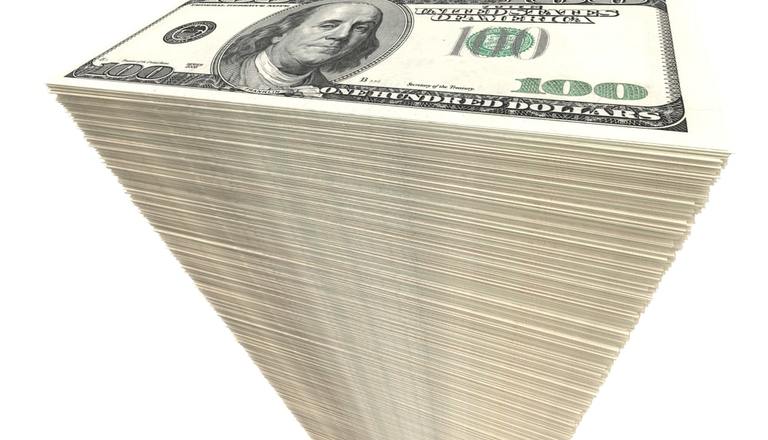
Some Powerball prizes are so big, they’re hard to comprehend. So, how tall would a stack be, representing $40 million?
Everyone who plays Powerball dreams of the same thing - let’s win big! But for the average person, winning such large sums of money can be a tough concept to wrap one’s head around completely. It's practically impossible to even visualize for most people. The average median household income is $68,000. And the average retiree accumulates roughly $200,000 in retirement savings. So, when you encounter $1 million, $5 million, or $100 million, it’s challenging to even visualize how much money it really is.
If you were to win $40 million in a Powerball drawing, here’s how tall that stack of bills would be. And we’ll share a few other metrics to help you grasp the size and scope of multi-million dollar jackpots. That way, should you ever find yourself a big winner, you’ll at least know what to expect.
How Tall is $40 Million?
Doing the math and breaking down what $40 million looks like starts with measuring the $100 bill. A standard U.S. $100 bill measures .0043 inches thick. Ten $100 bills equals $1 million. So, a $1 million stack of bills would stand 43 inches tall, which is the equivalent of roughly 3.5 feet.
Now imagine stacking those crisp $100 bills equalling $40 million. Using the same math, a $40 million stack would stand a whopping 143.33 feet tall. You’d need more than a few suitcases to carry that around, which is highly ill-advised, by the way.
How Much Space Does $1 Million Occupy?
If you visualize 100 bundles of $100 dollar bills, equalling $10,000 per bundle, it would be enough cash to occupy 0.4 cubic feet of space. When you see a brick of $100 bills, as in the movies, those bricks typically represent $100,000 each. Each brick of $100 bills weighs approximately 2.2 pounds.
And to really blow your mind, $1 billion dollars in $100 bills would occupy 400 cubic feet of space. Thinking about the levels of national debt, $1 trillion dollars would take up 400,000 cubic feet of space. The concept is mind-boggling.
A Suitcase of Millions
Here’s another thought. In the movies, you often see stacks and bundles of neatly assembled cash in a suitcase. If those were $100 bills, one average-size briefcase, measuring 25 inches by 18 inches, would hold almost $2.5 million dollars.
If you were to try and carry around $1 million in $20 bills, you’d be lugging more than 100 pounds of cash. Alternatively, $1 billion, piled in one-dollar bills, would weigh ten tons. If you were lucky enough to win that substantial amount in Powerball, you’d need heavy equipment to move it dollar-by-dollar. Again, not that handling that much money in small bills would ever be recommended.
Other Stacking Exercises to Help You Envision Big Money
Stacking one-dollar bills to equal $1 million, you’d have a tower of cash stretching 4,300 inches, or 358 feet. That’s more than 30 stories high. Stacking $100 million in one-dollar bills is almost 6.8 miles high. Your stack of bills would interfere with commercial jetliners at that height.
Stacking $1 billion in one-dollar bills would reach 67.9 miles high. That’s a stack of cash that stretches from the earth’s surface well into the lower troposphere, or the outer layer of the planet's atmosphere. A stack of $100 billion, in one-dollar bills, would stretch beyond the International Space Station.
Most people couldn’t imagine this kind of wealth. But if you do become a Powerball jackpot winner, now you know what that kind of money would look like. And despite how imposing such stacks of one and $100 bills would be, it can be spent lightning fast and dwindle quickly if you're not careful about proper financial planning.
